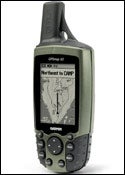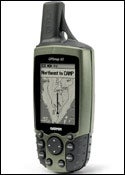A GPS unit is indeed a handy device to have when sailing. As you indicate, it can help you keep on track when fog or weather obscure the view of key landmarks. But theyre also useful in the unfortunate event of a sailor overboard and to mark the location of things such as crab pots and new or uncharted hazards.
Garmin’s GPSMAP 60
 GPSMAP 60
GPSMAP 60
There are plenty to choose from, that much is certain. Id suggest one in the middle price range$200 to $400to ensure it has the features you need. One excellent unit is the new Magellan eXplorist XL North America ($399; www.magellangps.com). It has a big, full-color display with built-in North American maps, plus the ability to add much more with SD cards. It tracks thousand of waypoints and five routes (again, add more with SD cards), and has an extremely accurate electronic compass. So its an excellent over-water navigational tool.
Garmins GPSMAP 60 ($320; www.garmin.com) is another good choice. It has similar features to the Magellan, but without the color screen. Its waterproof, comes pre-loaded with North American mapping software, and can take a wide range of additional maps. A color screen and expandable memory are available for a higher price in Garmins 60-Series line.
Both of these units can be mounted to a cradle for security. Or, you can buy a wrist-mounted unit, such as the Garmin Forerunner 205 ($268; www.garmin.com). Designed for hikers and bikers, it works well over water, too. You give up some screen size and readability, but you have tracking right with you all of the time.
For the bigger units, you might also consider an external antenna. Both Garmin and Magellan make antennas for their own GPS devicesthe price is typically around $50. That will ensure you always have the best possible reception, something that could come in most handy.
The votes are in: , including the year’s hottest GPS unit.


